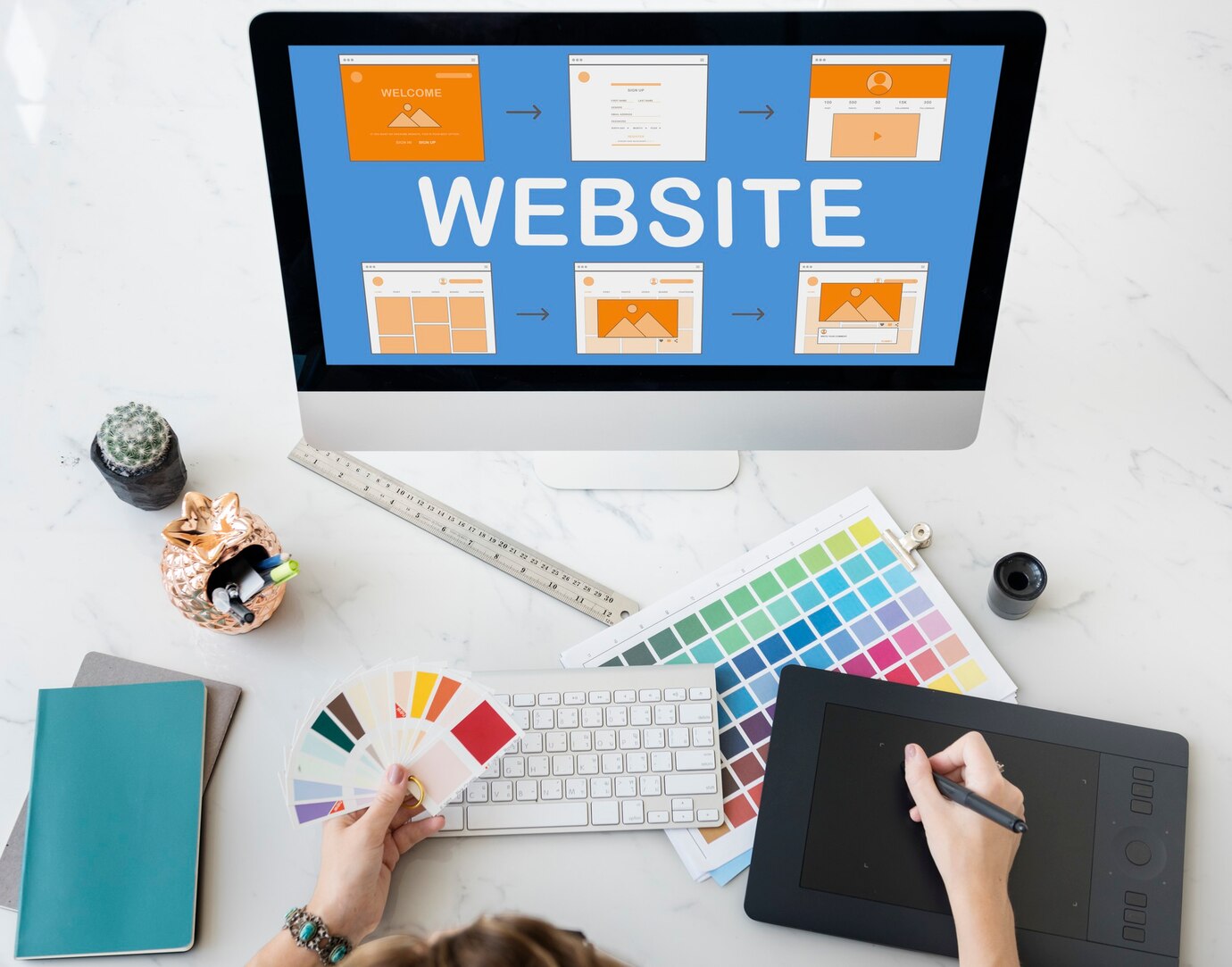Uncover the power of your WordPress site with consistent design – it’s the secret sauce for captivating your audience and keeping them engaged. From polished aesthetics to intuitive navigation, discover how a cohesive design strategy can elevate your online presence and drive success.

Let’s delve into the significance of consistent design for your WordPress site. From fostering user trust and engagement to reinforcing brand identity and amplifying user experience, we explore the myriad reasons why a cohesive and harmonious design is not just desirable but imperative in the digital ecosystem.
In the digital realm, where first impressions are swift and attention spans are fleeting, the design of your website serves as the ambassador of your brand. Within the vast landscape of content management systems, WordPress stands as a stalwart, empowering millions to bring their online visions to life. However, amidst the abundance of themes and customization options, one fundamental design principle often takes precedence: consistency.
Join us as we uncover the transformative power of consistency and unveil actionable insights to elevate your WordPress site from mere functionality to a captivating digital masterpiece.
Consistent design meaning
“Consistent design” refers to the practice of maintaining uniformity and coherence across various elements of a design, whether it’s for a product, website, app, or any other medium. It involves ensuring that all visual and functional aspects adhere to established guidelines, principles, and patterns throughout the entire design system.
Consistency in design helps users navigate and interact with the product more easily because they can predict how different elements will behave based on their previous experiences within the same system. This predictability fosters a sense of familiarity, trust, and efficiency.
4 consistent design principles
Let’s go over the 4 principles of consistent design.
Cohesiveness
Cohesiveness in website design refers to the concept of ensuring that all elements on a webpage work together harmoniously to create a unified and seamless user experience. This principle emphasizes consistency in design elements such as layout, color scheme, typography, imagery, and overall style throughout the entire website.
One example of cohesiveness on a website is using the same logo, color palette, and typography throughout the site. For example, if a brand’s logo features a specific color scheme and font, those should be consistently used in all design elements.

Colors and fonts
Consistency in website design regarding colors and fonts is crucial for creating a cohesive and visually appealing user experience. The key is to establish a set of guidelines for colors and fonts and adhere to them consistently throughout the website. This ensures that users have a seamless experience as they navigate different pages and elements of the site, reinforcing the brand identity and facilitating effective communication.
Consistent color schemes across the website create a unified visual identity. Choose a primary color palette and a secondary palette that complements it. For example, A website for a nature retreat might use earthy tones like greens and browns to evoke a sense of tranquility and connection with nature. These colors could be consistently applied to headings, backgrounds, and accent elements across the site.
Select a font pairing that reflects the brand’s personality and enhances readability. Consider using different font weights, styles, and sizes to create contrast and emphasize important content without sacrificing consistency. For example: A website for a modern art gallery might use a clean and elegant sans-serif font for body text paired with a bold and artistic serif font for headings. These fonts would be consistently applied across the site for a polished and cohesive look.
Alignment
Alignment in website design refers to positioning elements such as text, images, buttons, and other visual elements relative to each other within a layout. Consistent alignment helps create a sense of order and harmony, making the website visually appealing and easy to navigate.
There are various types of alignment, some of them include:
- Horizontal Alignment: Elements aligned along a horizontal axis create a sense of organization and structure. For instance, aligning the navigation menu items horizontally across the top of the webpage ensures that they are easily scannable and accessible to users.
- Vertical Alignment: Vertical alignment ensures that elements are positioned evenly from top to bottom or align with other elements vertically.
- Grid Alignment: Using a grid system for layout design ensures consistent alignment across different sections of the website. Grids help maintain visual harmony and make it easier to place elements in a structured manner.
- Center Alignment: Center alignment can be used for specific elements such as headings, logos, or call-to-action buttons to draw attention and create a focal point. However, it’s important to use center alignment sparingly and strategically to avoid clutter and maintain readability.
Regardless of what type of alignment you choose, make sure to stay consistent. Consistency in alignment throughout the website enhances the overall user experience and reinforces the brand identity.
Here are two examples of alignment on a website:
- On an e-commerce website, product images and descriptions are aligned horizontally within grid-based product listings, making it easy for users to compare different items.
- A hero section with a centered headline and a call-to-action button draws attention to the primary message and encourages user engagement.
Inconsistency
So we are talking about maintaining a design consistent, but one of the principles is inconsistency. This may seem counterintuitive, but it refers to deliberately breaking patterns or deviating from established norms in a controlled and purposeful manner to enhance user engagement, emphasize certain elements, or evoke specific emotions.
Here are some ways that inconsistency can be effectively applied in website design:
- While most elements on a website may follow a consistent color scheme, you can make CTA buttons stand out by using a contrasting color that doesn’t adhere to the established palette. This can create visual interest and increase user activity.
- Unexpected interactive elements or animations can create memorable user experiences. For instance, incorporating a playful hover effect on navigation links or buttons can surprise and delight users, encouraging further exploration of the website.
The key is to use inconsistency purposefully, ensuring that it aligns with the overall design goals and enhances the user experience rather than causing confusion or detracting from usability. By judiciously breaking patterns or deviating from norms, designers can create dynamic and memorable web experiences that captivate and resonate with users.
Why is Design Consistency Important?
Design consistency is crucial because it enhances user experience by providing predictability and familiarity. When elements within a design follow established patterns and standards, users can navigate user interfaces more effortlessly, leading to reduced cognitive load and increased efficiency.
Consistent design also fosters trust and credibility, as it suggests attention to detail and professionalism. It helps establish a cohesive brand identity, ensuring that visual and interactive elements align with the brand’s values and objectives.
Moreover, consistency aids in scalability, as it allows for easier maintenance and updates across various platforms and devices. Overall, maintaining design consistency is essential for creating intuitive, visually appealing, and user-friendly experiences.

Implementing Design Consistency
Web design consistency encompasses several aspects:
Visual consistency
This involves maintaining uniformity in visual elements such as using the same color palette, typography, iconography, spacing, and layout. Consistent use of these elements helps create a cohesive and harmonious visual language.
Functional consistency
This pertains to the behavior and functionality of interactive elements within the design. Buttons, links, menus, and other interactive components should behave consistently across different parts of the product to provide a smooth and intuitive user experience.
Internal consistency
Internal consistency in web design refers to the coherence and uniformity of design elements within a website. It ensures that all aspects, such as:
- typography,
- color scheme,
- layout,
- and navigation, maintain a harmonious and unified appearance throughout the site.
Consistency enhances user experience by providing predictability and familiarity. Moreover, it allows visitors to easily navigate and understand the interface. It also reinforces brand identity and credibility, as a consistent design reflects professionalism and attention to detail.
External consistency
External consistency in website design refers to maintaining visual and functional harmony with other platforms or standards outside of the website itself. This means ensuring that the design elements, layout, navigation, and overall user experience align with industry standards, user expectations, and possibly with the branding across different platforms like:
- social media,
- mobile apps,
- or physical marketing materials.
By adhering to external consistency, websites can enhance usability and learnability, credibility, and brand recognition by providing users with a familiar and cohesive experience across various touchpoints.
Benefits of Consistency in UI Design
Let’s go over some of the benefits of consistency in UI design. These advantages include increased usability, brand recognition and so much more. Dive into the details with us below.

Increased usability
Consistent design plays a pivotal role in enhancing usability within a user interface by fostering familiarity and predictability. When elements such as color schemes, typography, and navigation patterns remain uniform throughout the interface, users can easily anticipate how different features will behave, leading to a smoother interaction experience.
By incorporating similar elements across various sections of the interface, users develop mental models that reduce cognitive load and streamline their navigation process. Consistency not only establishes a sense of coherence but also builds trust and confidence in the system, ultimately empowering users to accomplish tasks more efficiently and effectively.
Brand Recognition
Consistent design on a website plays a key factor and a pivotal role in fostering better brand recognition due to its ability to establish and reinforce the brand’s visual style. When users visit a website, they subconsciously absorb various visual elements such as colors, typography, and layout.
A consistent visual style across all web pages creates a cohesive and memorable experience for visitors, imprinting the brand’s identity in their minds. This repetition helps to strengthen brand recall, as users become familiar with the distinct look and feel associated with the brand.
Whether it’s the logo placement, color scheme, or font choice, maintaining consistency instills a sense of trust and reliability, crucial factors in building a strong brand presence in the competitive online landscape. Furthermore, consistent design extends beyond the design projects of the website itself, influencing other brand touchpoints such as social media profiles and marketing materials, thereby amplifying brand recognition across various channels.
Cross-Platform Compatibility
Consistency creates a seamless user experience across different platforms, bolstering cross-platform compatibility in websites. When design elements such as layout, typography, color scheme, and navigation remain consistent, users can effortlessly transition between various devices and screen sizes without encountering jarring differences.
This ensures that whether a visitor accesses the website from a desktop computer, tablet, or smartphone, they encounter a familiar interface that is easy to navigate and understand. By adhering to consistent design principles, developers can minimize the need for platform-specific adaptations. Thus resulting in a more efficient development process and ultimately enhancing accessibility for all users regardless of the device they use.

Easier Maintenance
Consistent website design plays a pivotal role in simplifying maintenance tasks due to its inherent structure and organization. By maintaining uniformity across various pages, web developers can seamlessly transfer past knowledge and solutions to resolve issues encountered on other pages. This consistency streamlines the troubleshooting process, making it easier to identify and rectify any discrepancies or errors that may arise.
Furthermore, adhering to a cohesive design scheme ensures that updates and modifications can be applied universally, minimizing the risk of inconsistencies or broken elements across the site. Leveraging WordPress support services further enhances this process, offering invaluable assistance in keeping the website up to date and running smoothly by addressing technical issues, implementing security measures, and optimizing performance, thus ensuring a seamless user experience.
Better SEO
Consistent design for a WordPress site can significantly enhance its SEO performance by fostering a user-friendly experience and optimizing for search engine algorithms. A cohesive design ensures that visitors can easily navigate through the site, leading to longer dwell times and reduced bounce rates, both of which are favorable signals to search engines.
Moreover, consistent design elements, such as headers, footers, and internal linking structures, help search engine crawlers better understand the site’s organization and content hierarchy, leading to improved indexation and visibility in search results.
Additionally, a unified design approach often translates to faster loading times and mobile responsiveness, two critical factors that search engines prioritize when ranking websites. By prioritizing consistency in design, WordPress sites can enhance their overall user experience while simultaneously boosting their SEO performance.
Accessibility
Consistent design for a WordPress site is not just about aesthetic appeal; it plays a crucial role in enhancing accessibility as well. When design elements such as colors, fonts, and layout remain consistent throughout the site, users with disabilities find it easier to navigate and comprehend the content. Consistency provides a predictable structure, which is particularly beneficial for individuals with cognitive impairments or visual disabilities.
Moreover, adhering to consistent design principles ensures that assistive technologies like screen readers can effectively interpret the website’s layout and content, enabling seamless interaction for users with disabilities. By prioritizing consistency in design, WordPress site owners can significantly enhance accessibility, making their content more inclusive and reaching a broader audience.
Do you want to check the health of your website?

User trust
Consistent design on a WordPress site is paramount in fostering user trust for several reasons.
- Firstly, it creates a sense of professionalism and reliability, signaling to visitors that the site is well-maintained and credible. When users encounter a cohesive layout, color scheme, and typography across different pages, they feel reassured that they are navigating a unified and organized platform.
- Consistency also aids in usability, as it allows users to predict the location of elements and navigate the site effortlessly.
- Moreover, a consistent design instills confidence in users by conveying attention to detail and a commitment to quality. Ultimately strengthening their trust in the brand or organization behind the website.
Overall, a harmonious design aesthetic on a WordPress site not only enhances user experience but also plays a pivotal role in building and maintaining trust with visitors.
Competitive Advantage
Consistent design is the backbone of a successful WordPress site, offering a competitive edge in a crowded digital landscape. A cohesive visual identity across all pages fosters brand recognition and trust among users, enhancing their experience and encouraging prolonged engagement. With consistent design, visitors can easily navigate through the site, finding what they need intuitively, which ultimately boosts conversion rates and customer loyalty.
Moreover, a unified aesthetic communicates professionalism and attention to detail, setting a site apart from competitors and positioning it as a reputable authority within its niche. In an era where online presence is paramount, maintaining consistency in design on a WordPress site is not just about aesthetics; it’s a strategic move that can significantly impact a brand’s competitiveness and overall success.

How inconsistent design can harm your website?
An inconsistent website design can have detrimental effects on overall performance and user experience. Here’s how:
- When elements such as fonts, colors, and navigation styles change abruptly from one page to another, users can become disoriented. Consistency in design helps users understand the structure and layout of a website, making it easier for them to navigate and find information.
- Inconsistencies in design can lead to a disjointed user experience. Users may struggle to predict how certain elements will behave or where to find specific features. Thus resulting in frustration and dissatisfaction.
- A website with inconsistent design may appear unprofessional or unreliable to visitors. Consistency in web design communicates attention to detail and a commitment to providing a cohesive user experience.
- When users encounter difficulties navigating or understanding a website due to inconsistent design, they are more likely to leave the site without completing their intended actions. High bounce rates can negatively impact metrics such as conversion rates and overall website performance.
- Inconsistent design elements can dilute the brand’s image and message. Thus leading to confusion among users about the brand’s values and offerings.
- When you don’t remain consistent this can also pose challenges for users with disabilities. They rely on consistent layouts and navigation patterns to access and interact with web content. Failure to provide a consistent user experience for all visitors can result in exclusion and accessibility issues.
Inconsistent design can harm a website by confusing, diminishing user experience, undermining trust and credibility, increasing bounce rates, diluting brand perception, and creating accessibility challenges. Web designers need to prioritize consistency in design to ensure a positive and seamless user experience.

TL;DR: The Tapestry of Consistent Design – A Recap
Consistent design is the bedrock of a successful WordPress site, ensuring a cohesive and polished user experience. Consistent design refers to the uniform application of design principles such as cohesiveness, where every element works harmoniously together; careful selection of colors and fonts to evoke the desired mood and readability; and precise alignment for a visually pleasing layout. Inconsistencies in design can lead to confusion and detract from the overall user experience.
Embracing consistent design offers numerous benefits, including enhanced usability as users navigate your site seamlessly, and increased brand recognition as your site becomes instantly recognizable across platforms. By investing in a consistent design approach, you not only improve user satisfaction but also establish a strong brand presence in the digital landscape.
Ready to elevate your WordPress site with custom UX/UI design tailored to your brand’s unique identity? Drop us a line today and let’s transform your digital presence into a captivating and user-friendly experience. Leave a lasting impression on your audience.
Comments